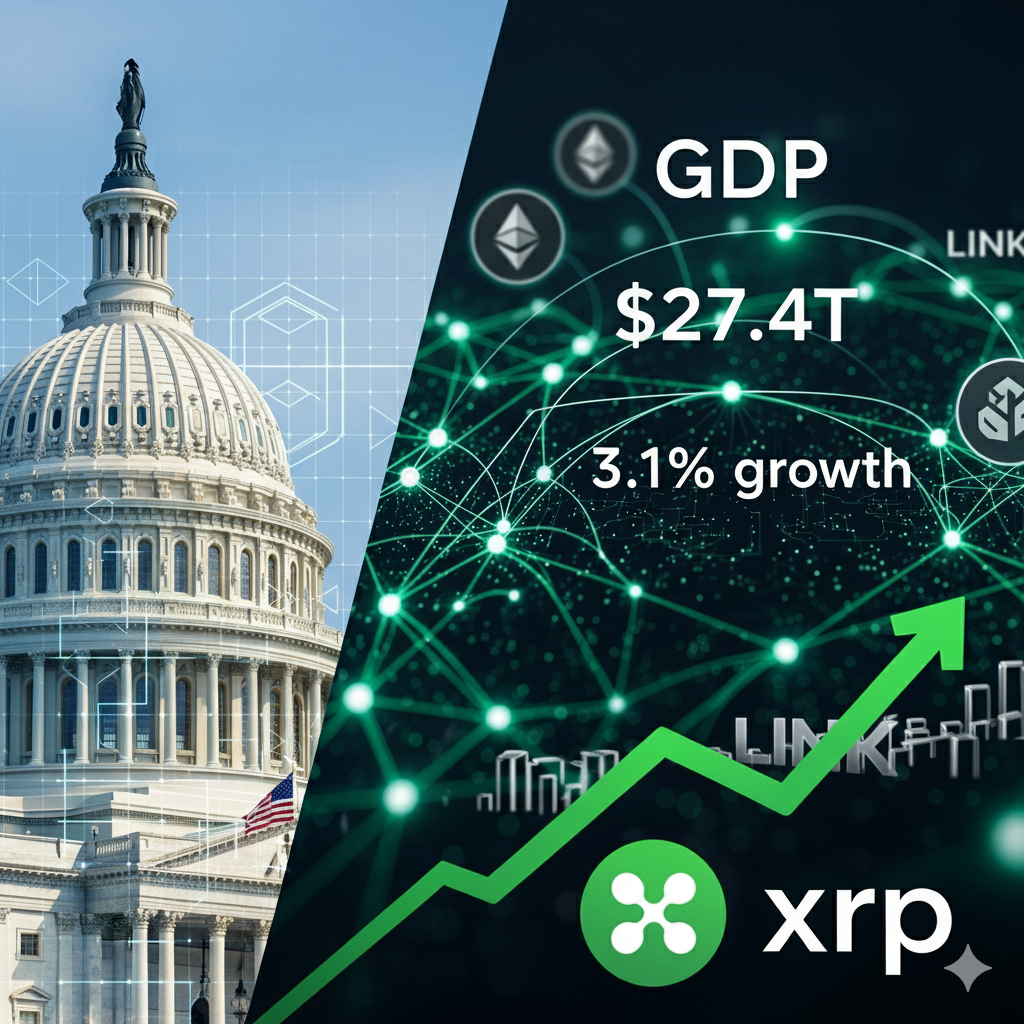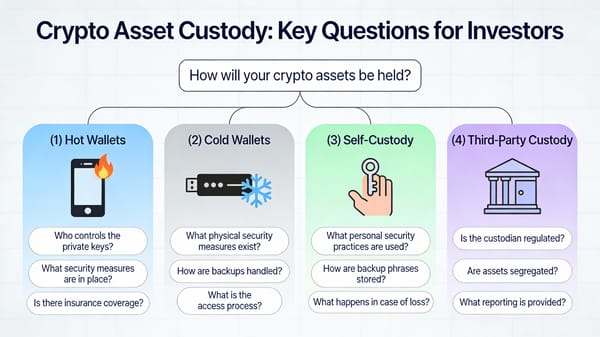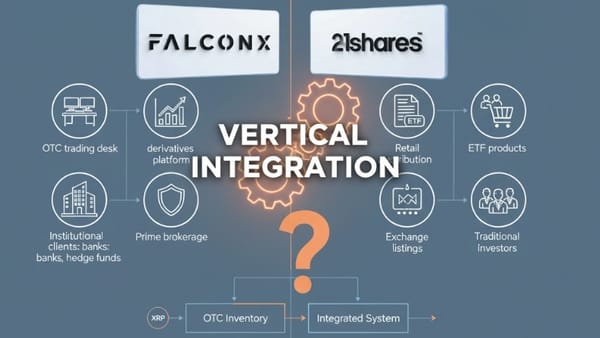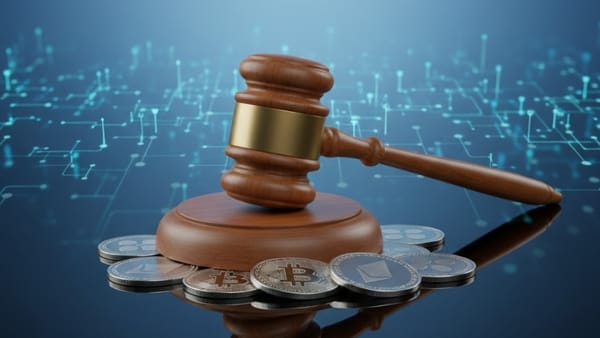U.S. Commerce Department to Put GDP Data on Blockchain: Which Cryptos Benefit Most?
U.S. Commerce Dept will put GDP data on blockchain! Lutnick announces revolutionary shift during Trump cabinet meeting. XRP emerges as top beneficiary with gov partnerships & tech advantages. ETH, LINK also positioned to gain.

The United States government has officially announced a groundbreaking initiative that could fundamentally change how economic data is reported and verified. Commerce Secretary Howard Lutnick revealed during a cabinet meeting with President Trump that the Department of Commerce will soon begin issuing GDP figures and other economic statistics on blockchain technology. This marks one of the first major implementations of blockchain for official U.S. government economic reporting—but which blockchain will they use, and which cryptocurrencies stand to benefit most?
BREAKING ⚠️
— Shay (@ElysiumEffect) August 26, 2025
HOWARD LUTNIK SECRETARY OF COMMERCE STATED THAT 🇺🇸 GOVERNMENT WILL BEGIN ISSUING DATA VIA BLOCKCHAIN
pic.twitter.com/gwPPgz4VaD
Breaking Down the Historic Announcement
The plan focuses on releasing GDP figures on-chain to enable people to "use the blockchain for data distribution," according to Lutnick. The Commerce Secretary emphasized that officials are currently "ironing out the details" on implementing blockchain for GDP reporting, suggesting the rollout is imminent.
What makes this particularly significant is the scope of the initiative. The department aims to expand its capability across other government agencies, with Lutnick stating they're going to "make that available to the entire government so all of you can do it". This indicates a comprehensive shift toward blockchain-based data distribution across federal agencies.
Technical Implementation: Which Blockchain Will They Use?
While specific technical details haven't been disclosed, analyzing government blockchain preferences reveals likely implementation approaches. Government blockchain implementations typically favor permissioned networks over public blockchains for several key reasons:
Enterprise-Grade Requirements: Government data requires strict access controls, regulatory compliance, and privacy protections that public blockchains can't provide. Most government blockchain projects use permissioned platforms like Hyperledger Fabric or Enterprise Ethereum.
Hyperledger Fabric vs. Enterprise Ethereum: Based on existing government blockchain implementations, two platforms emerge as frontrunners:
- Hyperledger Fabric: This Linux Foundation project was designed specifically for enterprise and government use from the outset. It offers modular architecture, permissioned networks, and can handle the scale required for GDP data distribution. The Department of Homeland Security already uses Hyperledger for various blockchain initiatives.
- Enterprise Ethereum: Private, consortium implementations of Ethereum code offer the benefits of the world's largest blockchain developer community while providing the privacy and control governments require.
Precedent from Existing Programs: The Department of Homeland Security's blockchain portfolio shows government preference for interoperable solutions that support open standards. Their Silicon Valley Innovation Program has funded blockchain projects focusing on "architecture, standards, and interoperability."
Which Cryptocurrencies Benefit Most?
This government blockchain adoption creates a hierarchy of beneficiaries, with some cryptocurrencies positioned to gain more than others:
Top Tier: Enterprise-Focused Blockchains
1. XRP/Ripple (Highest Benefit Potential)
- Government Partnerships: Already working with California's blockchain task force and has 60+ regulatory licenses globally
- Technical Advantages: 3-5 second settlement times, minimal transaction costs (~$0.0002), built-in compliance tools
- Real-World Asset Tokenization: XRPL is increasingly used for tokenizing U.S. Treasuries, carbon credits, and government bonds
- Banking Integration: Over 300 institutions use Ripple's payment infrastructure
- Price Catalyst: Government validation could drive XRP toward $3.50+ resistance levels
2. Ethereum (ETH) - Infrastructure Play
- Developer Ecosystem: World's largest blockchain developer community
- Smart Contract Leadership: The most mature smart contract platform for complex government applications
- Enterprise Versions Available: Multiple enterprise Ethereum clients designed for government use
- DeFi Integration: Could facilitate government financial operations through decentralized finance protocols
3. Hyperledger Fabric Ecosystem Tokens
- Government Preference: Already used by multiple government agencies, including DHS
- Permissioned Architecture: Designed specifically for enterprise/government use cases
- Modular Design: Plug-and-play components ideal for government requirements
- IBM Partnership: Strong corporate backing from a major government contractor
Second Tier: Infrastructure Providers
4. Chainlink (LINK)
- Oracle Services: Essential for connecting government blockchain data to real-world systems
- Government Data Feeds: Could provide weather, economic, and other data to government blockchains
- Smart Contract Integration: Enables complex automated government processes
5. Polygon (MATIC)
- Ethereum Scaling: If the government chooses Ethereum-based solutions, Polygon provides the necessary scaling
- Low Transaction Costs: Government-grade efficiency for high-volume data distribution
- Enterprise Partnerships: Growing government and enterprise adoption
Third Tier: General Blockchain Beneficiaries
6. Bitcoin (BTC)
- Strategic Reserve Asset: Already confirmed for the government's Strategic Bitcoin Reserve
- Store of Value: Government adoption validates Bitcoin's "digital gold" narrative
- Limited Direct Benefit: Unlikely to be used for GDP data distribution due to energy consumption and scalability limitations
7. Cardano (ADA) & Solana (SOL)
- Technical Capabilities: Both offer fast, scalable solutions
- Government Interest: Included in the proposed government Digital Asset Stockpile
- Limited Current Adoption: Less established in government/enterprise use cases compared to XRP and Ethereum
Why This Matters Now
The timing of this announcement is notable given the current economic climate. The U.S. has faced scrutiny over GDP reporting methodologies, with Commerce Secretary Lutnick previously suggesting the administration might change how gross domestic product is tabulated. While that specific proposal was criticized by economists, the blockchain initiative represents a more measured approach to enhancing transparency.
Traditional GDP reporting has long relied on centralized systems that can be subject to revision and reinterpretation. By moving to blockchain, the Commerce Department is essentially creating an immutable ledger of economic data that cannot be altered once recorded. This could provide unprecedented transparency and trust in government economic reporting.
Market Implications and Investment Thesis
The announcement comes during a period of significant government focus on blockchain technology. The Trump administration has already established a Bitcoin Strategic Reserve, and Lutnick has suggested Bitcoin could eventually be tracked like gold in U.S. economic data reports.
This blockchain adoption by the federal government creates several investment themes:
Infrastructure Validation: When governments use blockchain for critical functions, it validates the technology's enterprise readiness. This could accelerate institutional adoption across the private sector, particularly in regulated industries.
Market Size Impact: The global blockchain market is expected to rise from USD 34.19 billion in 2025 to USD 675.6 billion by 2033, growing at a CAGR of 45.2%. Government adoption of GDP reporting could significantly accelerate this trajectory.
Enterprise Token Premium: Cryptocurrencies with proven government/enterprise use cases (like XRP, Enterprise Ethereum) may command premium valuations over purely speculative assets.
XRP/Ripple Analysis: Best Positioned for Government Blockchain Wave
This development holds particular significance for XRP and Ripple Labs, which have positioned themselves at the forefront of institutional blockchain adoption. Several factors make this announcement especially relevant for XRP:
Government Partnership Momentum
Ripple is already making strategic inroads into public-sector innovation, with California officially tapping the blockchain giant—along with Coinbase and MoonPay—for a new state initiative aimed at modernizing government operations. This California Breakthrough Project demonstrates Ripple's growing influence in government blockchain initiatives.
Technical Advantages for Government Use
The XRP Ledger's technical specifications align well with government needs. The XRPL supports fast settlement (3-5 seconds), minimal transaction costs (~$0.0002 per transaction), and built-in compliance tools, making it ideal for institutional and government applications.
Real-World Asset Tokenization Leadership
The XRP Ledger is increasingly used to tokenize real-world assets like stablecoins, U.S. Treasuries, carbon credits, and even real estate. With government data now moving to blockchain, XRP's infrastructure could become essential for various government blockchain applications beyond GDP reporting.
Price Implications and Technical Analysis
Market analysts suggest this government blockchain trend could benefit XRP significantly. XRP adoption is driven by institutional interest, particularly among banks, remittance companies, and fintech providers, and the expansion of RippleNet's On-Demand Liquidity (ODL) could significantly impact future price trends.
Current technical analysis shows promise, with XRP consolidating around $2.90 after delivering a 37% gain over eight consecutive trading days. Technical indicators suggest bulls could target $3.50 resistance if current support levels hold through institutional partnership momentum.
Regulatory and Compliance Considerations
The Commerce Department's blockchain initiative comes with significant regulatory implications. By using blockchain for official economic data, the government is effectively endorsing the technology's security and reliability. This could influence other regulatory bodies' approach to blockchain and cryptocurrency regulations.
For companies like Ripple, which have faced regulatory challenges, government adoption of blockchain technology could signal a more favorable regulatory environment. Recent legal developments, including the resolution of the SEC lawsuit, have positively impacted XRP's market perception.
The U.S. government has confirmed it will not be purchasing additional cryptocurrencies beyond Bitcoin for its Strategic Bitcoin Reserve. However, the Digital Asset Stockpile will contain assets like ETH, XRP, ADA, and SOL obtained through legal seizures—though current data shows the government holds zero XRP, SOL, or ADA from past forfeitures.
Global Government Blockchain Trends
This GDP blockchain initiative represents just the beginning of potential government blockchain adoption. Historical precedents from other countries suggest that once governments begin using blockchain for one function, expansion to other areas typically follows.
International Examples:
- Estonia's blockchain-based digital ID system
- Dubai's comprehensive blockchain strategy for government services
- EU's European Blockchain Services Infrastructure (EBSI)
- Philippines' Ethereum-based solution for rural banking access
The World Economic Forum has previously predicted that around 10% of global gross domestic product (GDP) is likely to be stored on blockchain by 2027. The U.S. government's move to put GDP data on blockchain could be a significant step toward realizing this prediction.
Investment Strategy: Which Tokens to Watch
Based on this analysis, investors should focus on cryptocurrencies with proven enterprise and government utility rather than purely speculative assets:
Immediate Beneficiaries (High Conviction):
- XRP - Best positioned with government partnerships and technical advantages
- ETH - Infrastructure plays with the largest developer ecosystem
- LINK - Essential oracle services for government data integration
Medium-Term Plays: 4. MATIC - Ethereum scaling solutions for government efficiency 5. Enterprise blockchain platform tokens with government contracts
Long-Term Holdings: 6. BTC - Store of value validation through Strategic Bitcoin Reserve 7. ADA/SOL - Technical capabilities for future government adoption
Key Takeaways
The Commerce Department's decision to implement blockchain for GDP reporting represents a watershed moment for both government transparency and blockchain adoption. This move validates blockchain technology at the highest levels of government while potentially creating new opportunities for blockchain platforms designed for institutional use.
Critical Success Factors:
- Government blockchain implementations favor permissioned networks
- Enterprise-focused cryptocurrencies with proven government partnerships have significant advantages
- XRP emerges as the top beneficiary due to existing government relationships and technical capabilities
- Infrastructure tokens (ETH, LINK, MATIC) provide diversified exposure to government blockchain adoption
For investors and market participants, this development signals a fundamental shift in how governments view blockchain technology—from a speculative asset class to essential infrastructure for critical government functions. As implementation details emerge and the system goes live, expect continued positive momentum for blockchain adoption across both public and private sectors.
The intersection of government blockchain adoption and cryptocurrency markets has never been more relevant, making this announcement a critical development to monitor as it unfolds throughout 2025.
Sources:
- Investing.com - Lutnick defends Intel deal, says Commerce to issue blockchain stats
- CryptoBriefing - US Commerce Department will put GDP and statistics on the blockchain
- Brave New Coin - Ripple Joins California Task Force as State Embraces Blockchain
- Department of Homeland Security - Blockchain Portfolio
- GeeksforGeeks - Hyperledger vs Ethereum in Blockchain
- Market Data Forecast - Blockchain Market Size Report
- Yahoo Finance - XRP Price Prediction Analysis
DISCLAIMER: This newsletter is for informational purposes only and does not constitute investment advice or a recommendation to buy, sell, or hold any securities. Investments in cryptocurrencies or other financial assets carry significant risks, including the potential for total loss, extreme volatility, and regulatory uncertainty. Past performance is not indicative of future results. Always consult a qualified financial professional and conduct thorough research before making any investment decisions.



